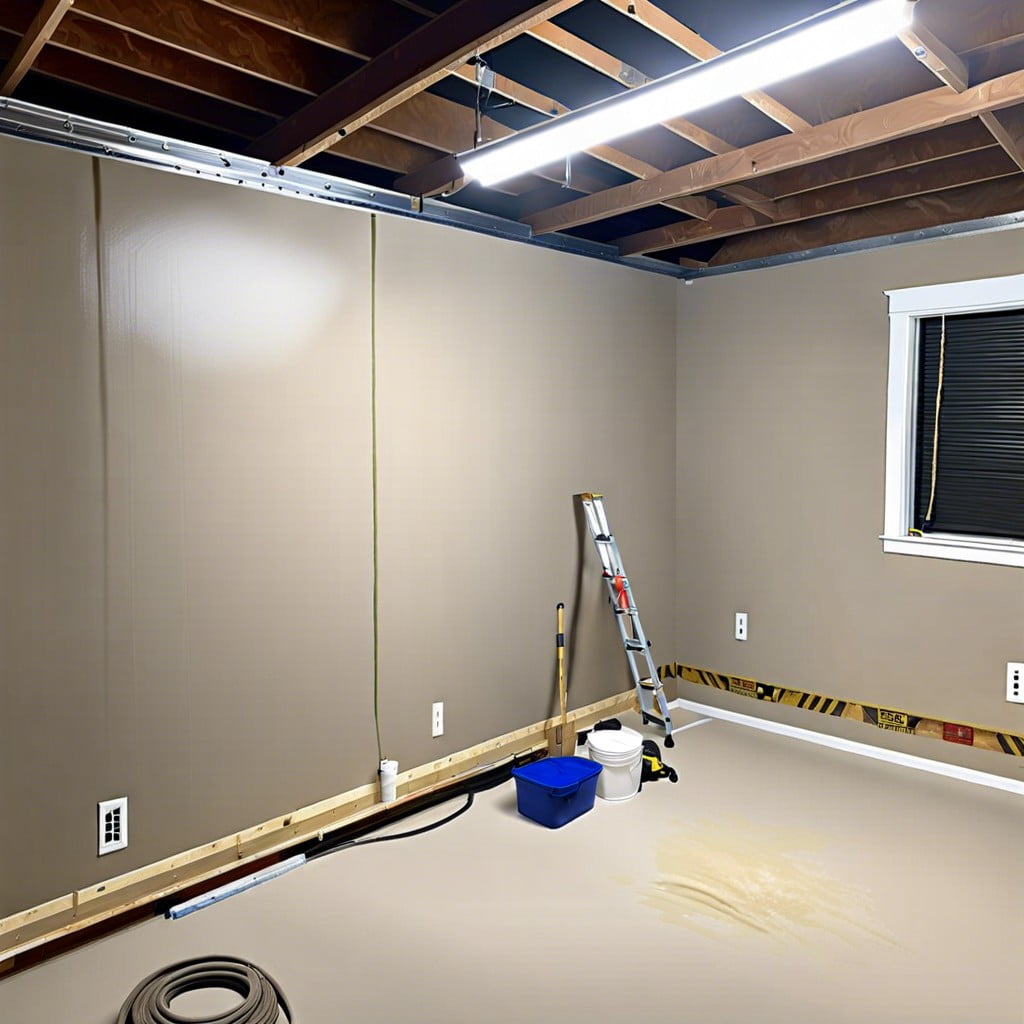Learn how to paint your garage walls efficiently and effectively to transform your space.
Key takeaways:
- Clear out the garage and clean the walls thoroughly.
- Prime your walls for better adhesion and a smoother finish.
- Prep and prime before painting over an old oil-based paint.
- Choose light colors for brightness or dark colors for masking stains.
- Use satin or semi-gloss latex paint for durability and easy cleaning.
Getting the Garage Ready for Paint: Preparation Steps

Start by clearing out the garage as much as possible. Remove tools, bicycles, and storage boxes to ensure you have ample space to move around and the walls are accessible.
Next, thoroughly clean the walls. Dust and grime can prevent paint from adhering properly, so use a broom or a vacuum with a brush attachment to get rid of cobwebs and dust. For grease spots, a degreasing agent will be necessary to ensure a clean surface.
Inspect the walls for any cracks or holes. Fill these imperfections with a suitable filler and allow it to dry completely according to the manufacturer’s instructions.
Finally, cover the floor and any remaining items with drop cloths or old sheets to protect them from paint splatters. Use painter’s tape to shield door frames, windows, and trim from accidental brush strokes.
With these steps, your garage will be primed and ready for a fresh coat of paint.
Should I Prime My Garage Walls Before Painting?
Priming your garage walls creates a smooth and receptive base for your top coat, improving paint adhesion and sealing porous surfaces. This step is vital if you’re switching from a dark to a light color, ensuring that the old hue doesn’t bleed through. Additionally, using a primer can help block stains and reduce the number of top coats needed, potentially saving time and paint. Always opt for a high-quality primer suited for your wall material, whether drywall, concrete, or plaster, to achieve professional-looking results.
Applying A New Coat Of Paint Over an Old Oil-Based One
Before diving into the paint job, confirm whether the existing paint is oil-based. You can do this using a simple test with a cotton ball and some rubbing alcohol. If the paint comes off on the cotton, it’s likely latex; if it doesn’t, it’s oil-based.
Transitioning from oil-based to another type of paint requires some prep work. Start by lightly sanding the surface. This roughens up the glossy finish, allowing the new paint to adhere better. After sanding, clean the walls meticulously to remove dust and debris.
Applying a high-quality primer is crucial for ensuring good adhesion and coverage. Opt for a primer specifically designed for use over oil-based paints. This creates a perfect foundation for whatever new paint type you choose, whether it’s latex or another oil-based product.
Once the primer is dry, proceed with painting as usual. Remember to use a paintbrush or roller suitable for the type of paint you’re applying to achieve the best results.
How to Choose a Garage Paint Wall Color
Selecting the right color for your garage walls can significantly affect both the functionality and aesthetics of the space. Consider these points during your decision-making process:
Light colors, like white or beige, tend to brighten the space, making it easier to find tools and work on projects. They can also help illuminate the area effectively if you have limited lighting.
Dark shades can be useful for masking stains and dirt that inevitably accumulate in a garage environment. Charcoal or slate can give your garage a sleek, modern look.
For a touch of energy and creativity, bold colors such as blues or greens can transform your garage into an inviting workspace. These are particularly appealing if you spend a lot of time in the garage or use it as a hobby area.
Lastly, think about the color of the garage floor and the overall home exterior. Choosing harmonious colors can create a unified look and even boost your home’s curb appeal. Always test paint colors in different lighting conditions to see how they might change throughout the day.
What Is The Best Paint To Use In A Garage?
Selecting the right type of paint for your garage walls hinges on both functionality and aesthetics. Resilience and ease of cleaning are prime considerations due to the garage’s exposure to dirt, grease, and varying temperatures.
Opt for satin or semi-gloss paint finishes. These surfaces fend off moisture and allow for hassle-free wiping, crucial for high-traffic areas like garages. They also reflect light better, brightening up often dim spaces.
Latex paint is popular for its quick-drying properties and minimal odor. It’s environmentally friendlier compared to oil-based alternatives and provides durable coverage that resists flaking and peeling over time.
Lastly, contemplate adding an anti-mold additive if your garage is prone to dampness. This extra step can prevent mold growth, preserving the integrity and appearance of your garage walls longer.